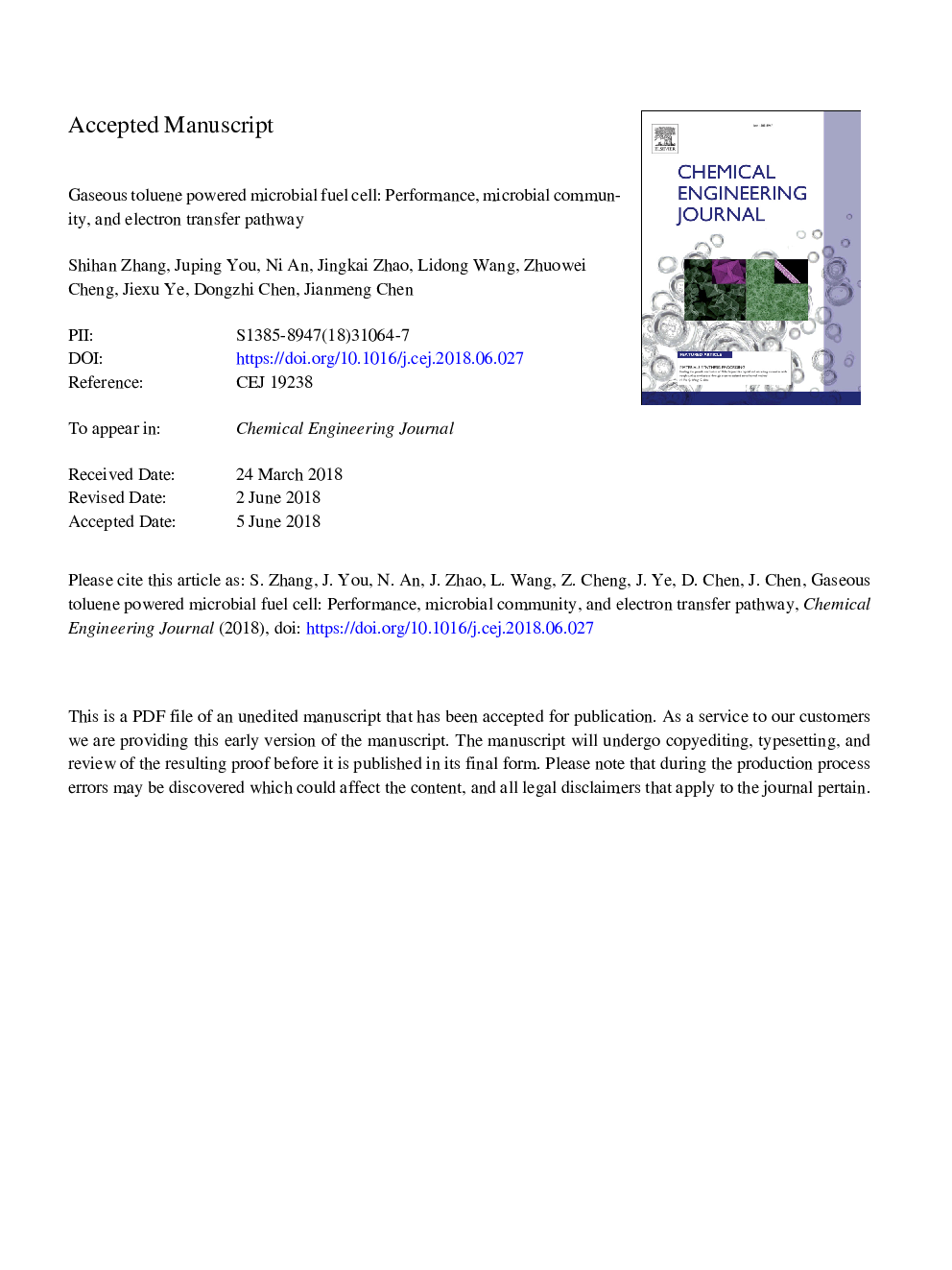| Article ID | Journal | Published Year | Pages | File Type |
|---|---|---|---|---|
| 6578262 | Chemical Engineering Journal | 2018 | 33 Pages |
Abstract
A microbial fuel cell (MFC) was used to evaluate its performance of the gaseous toluene removal in this work. The experimental results revealed that the MFC exhibited a removal efficiency as high as 88% with a toluene concentration of 300â¯mgâ¯mâ3. Moreover, the closed-circuit MFC exhibited 1.4-3.5 times higher toluene removal efficiency compared with the open-circuit MFC, indicating that the interaction between the electrodes and microorganisms accelerates the electron transfer rate and thus enhances the microbial degradation rate. The microbial community analysis indicated that, in the toluene-powered MFC, the growth of the exoelectrogens such as Arcobacter and Geobacter were inhibited and the toluene degraders such as Chryseobacterium and Zoogloea prevailed in the MFC. For example, Arcobacter was almost disappeared and Geobacter was decreased by 40% as the fuel in the MFC switched from the acetate to toluene. Moreover, compared with Chryseobacterium, Zoogloea exhibited a high activity in the toluene removal as evidenced by the relationship between microbial community and its performance. Furthermore, the cyclic voltammetry analysis showed that an oxidation peak at â0.31â¯V vs Ag/AgCl and an apparent redox-area at â0.1 to +0.2â¯V vs Ag/AgCl was observed compared to the abiotic control, which are typical to the menaquinone and the outer membrane cytochromes (OMC) such as OmcZ, OmcS, a-type, and d-type. Therefore, a direct electron transfer pathway involving the menaquinone and OMC were proposed in the toluene-powered MFC. This work will provide some insight into development of gaseous VOCs-powered MFC and a novel technology for the VOCs removal.
Related Topics
Physical Sciences and Engineering
Chemical Engineering
Chemical Engineering (General)
Authors
Shihan Zhang, Juping You, Ni An, Jingkai Zhao, Lidong Wang, Zhuowei Cheng, Jiexu Ye, Dongzhi Chen, Jianmeng Chen,
